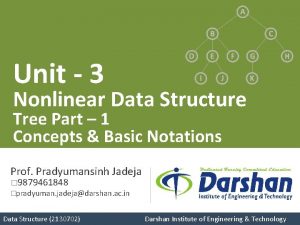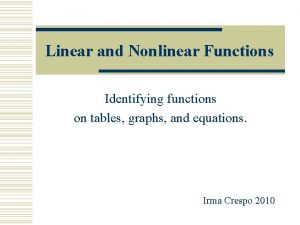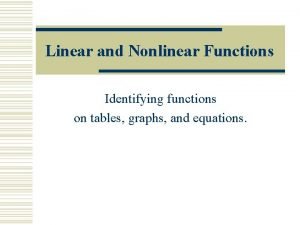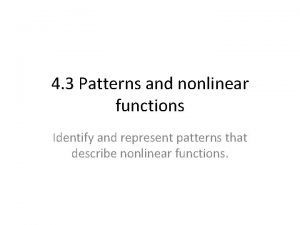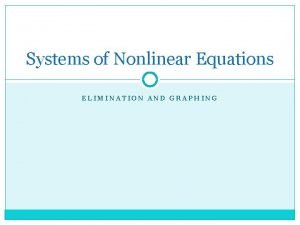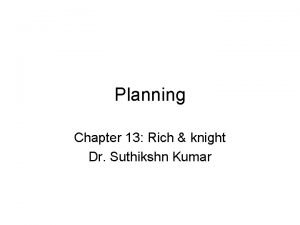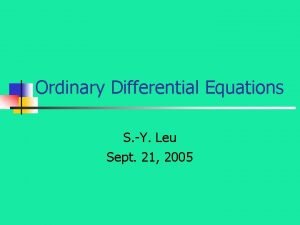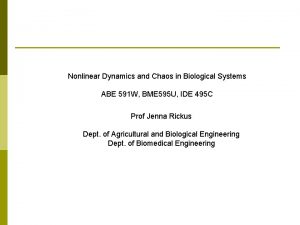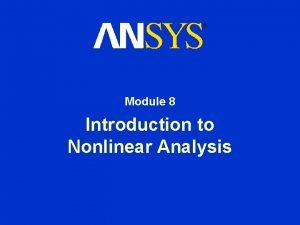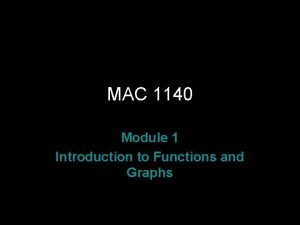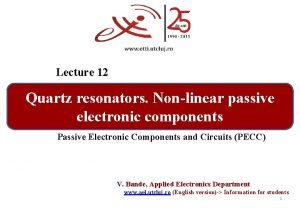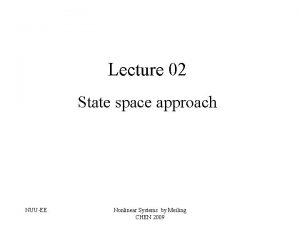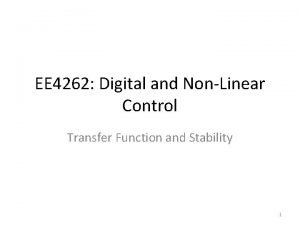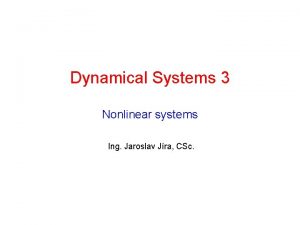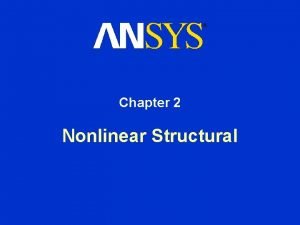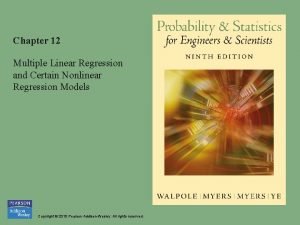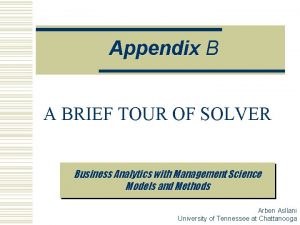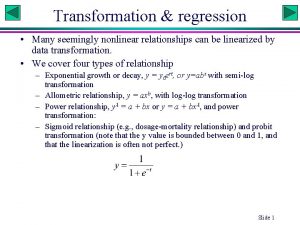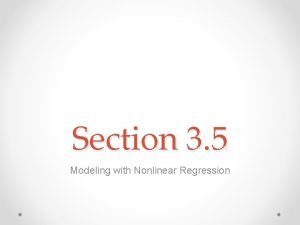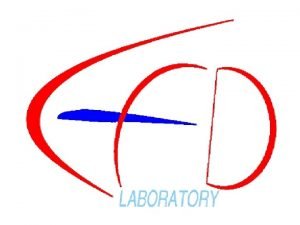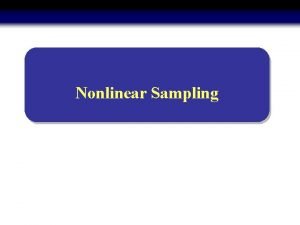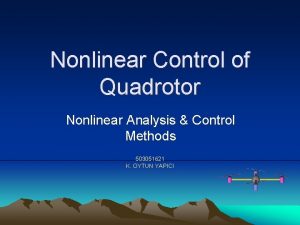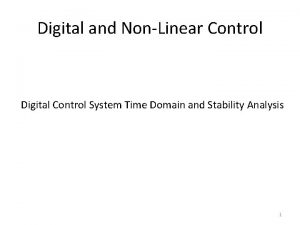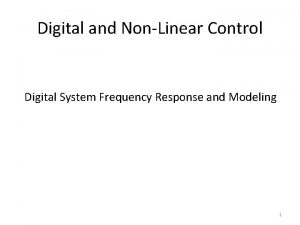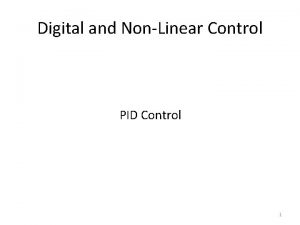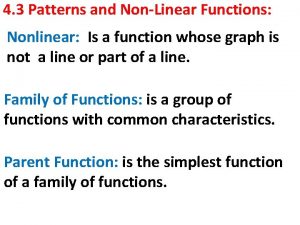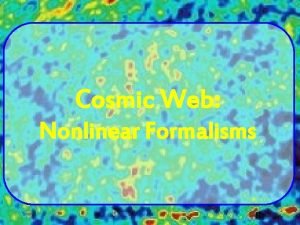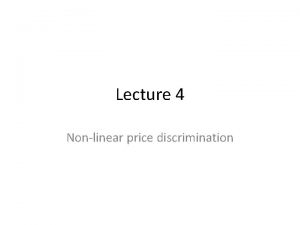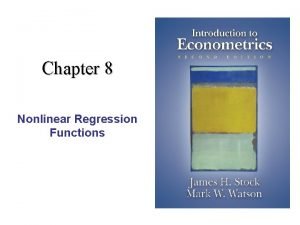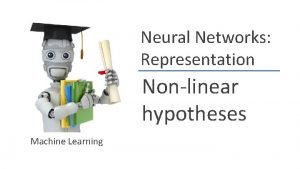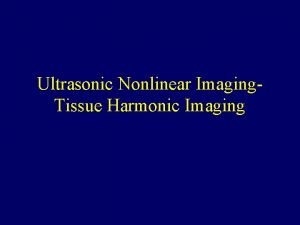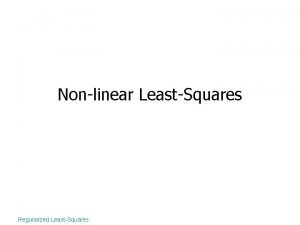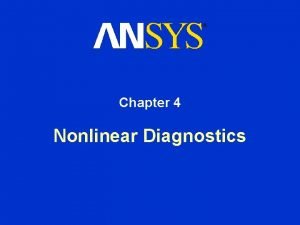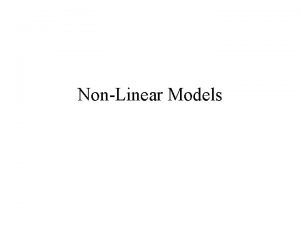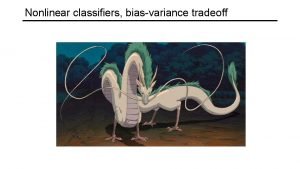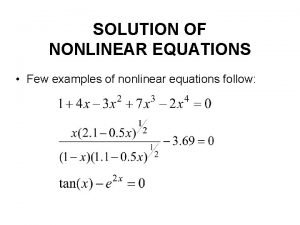Digital and NonLinear Control Digital Control and Z





































- Slides: 37

Digital and Non-Linear Control Digital Control and Z Transform 1

Introduction • Digital control offers distinct advantages over analog control that explain its popularity. • Accuracy: Digital signals are more accurate than their analogue counterparts. • Flexibility: Modification of a digital controller is possible without complete replacement. • Speed: Digital computers may yield superior performance at very fast speeds • Cost: Digital controllers are more economical than analogue controllers. 2

Structure of a Digital Control System 3

Examples of Digital control Systems Aircraft Turbojet Engine 4

Difference Equation vs Differential Equation • A difference equation expresses the change in some variable as a result of a finite change in the other variable. • A differential equation expresses the change in some variable as a result of an infinitesimal change in the other variable. 5

Differential Equation • Following figure shows a mass-spring-damper-system. Where y is position, F is applied force D is damping constant and K is spring constant. • Rearranging above equation in following form 6

Differential Equation • Rearranging above equation in following form 7

Difference Equation 8

Difference Equations • 9

Difference Equations • 10

Z-Transform • Difference equations can be solved using z-transforms which provide a convenient approach for solving LTI equations. • The z-transform is an important tool in the analysis and design of discrete-time systems. • It simplifies the solution of discrete-time problems by converting LTI difference equations to algebraic equations and convolution to multiplication. • Thus, it plays a role similar to that served by Laplace transforms in continuous-time problems. 11

Z-Transform • Given the causal sequence {u 0, u 1, u 2, …, uk}, its ztransform is defined as • The variable z− 1 in the above equation can be regarded as a time delay operator. 12

Z-Transform • Example 2: Obtain the z-transform of the sequence 13

Laplace Transform and Z-Transform • Given the sampled impulse train of a signal 14

Relationship Between Laplace Transform and ZTransform • 15

A Note • 16

Conformal Mapping between s-plane to z-plane • 17

Conformal Mapping between s-plane to z-plane • 18

Conformal Mapping between s-plane to z-plane 19

Conformal Mapping between s-plane to z-plane 20

Conformal Mapping between s-plane to z-plane 21

Conformal Mapping between s-plane to z-plane 22

Conformal Mapping between s-plane to z-plane 23

Conformal Mapping between s-plane to z-plane 24

Mapping regions of the s-plane onto the z-plane 25

z-Transforms of Standard Discrete-Time Signals • The following identities are used repeatedly to derive several important results. 26

z-Transforms of Standard Discrete-Time Signals • Unit Impulse • Z-transform of the signal 27

z-Transforms of Standard Discrete-Time Signals • Sampled Step • or • Z-transform of the signal 28

z-Transforms of Standard Discrete-Time Signals • Sampled Ramp • Z-transform of the signal 29

z-Transforms of Standard Discrete-Time Signals • Sampled Exponential Signal • Then 30

Example 3 • Find the z-transform of following causal sequences. 31

Example 3 • Find the z-transform of following causal sequences. Solution: Using Linearity Property 32

Example 3 • Find the z-transform of following causal sequences. Solution: The given sequence is a sampled step starting at k-2 rather than k=0 (i. e. it is delayed by two sampling periods). Using the delay property, we have 33

Inverse Z-transform • Partial Fraction Expansion: This method is very similar to that used in inverting Laplace transforms. However, because most z-functions have the term z in their numerator, it is often convenient to expand F(z)/z rather than F(z). 34

Inverse Z-transform • Example 4: Obtain the inverse z-transform of the function • Solution • Partial Fractions 35

Inverse Z-transform 36

Inverse Z-transform • Taking inverse z-transform (using z-transform table) 37
 Linear pipeline vs non linear pipeline
Linear pipeline vs non linear pipeline Linear and nonlinear data structure
Linear and nonlinear data structure Linear editing vs non linear editing
Linear editing vs non linear editing Linear and nonlinear data structure
Linear and nonlinear data structure Non linear text
Non linear text Linear table
Linear table Identifying linear functions worksheet
Identifying linear functions worksheet Table linear or nonlinear
Table linear or nonlinear Example of non-linear multimedia
Example of non-linear multimedia Nonlinear plot meaning
Nonlinear plot meaning What is a nonlinear relationship
What is a nonlinear relationship Difference between linear and nonlinear spatial filters
Difference between linear and nonlinear spatial filters Differences between linear and nonlinear equations
Differences between linear and nonlinear equations Csc 253
Csc 253 Patterns and nonlinear functions
Patterns and nonlinear functions Non linear simultaneous equations
Non linear simultaneous equations Graphing nonlinear equations
Graphing nonlinear equations Declobbering
Declobbering Contoh gaya berpikir linear dan nonlinear
Contoh gaya berpikir linear dan nonlinear Non linear ode
Non linear ode What is non linear pharmacokinetics
What is non linear pharmacokinetics Linear or nonlinear
Linear or nonlinear Introduction to nonlinear analysis
Introduction to nonlinear analysis Contoh gaya berpikir linear dan nonlinear
Contoh gaya berpikir linear dan nonlinear Nonlinear function table
Nonlinear function table Nonlinear electronic components
Nonlinear electronic components Nonlinear transfer function
Nonlinear transfer function Non linear transfer function
Non linear transfer function Period doubling
Period doubling Ansys newton raphson
Ansys newton raphson Polynomial regression least squares
Polynomial regression least squares Multiple nonlinear regression spss
Multiple nonlinear regression spss Apa yang dimaksud dengan fungsi non linear
Apa yang dimaksud dengan fungsi non linear Grg nonlinear solver
Grg nonlinear solver Nonlinear model
Nonlinear model Nonlinear transformation regression
Nonlinear transformation regression Nonlinear regression exponential model
Nonlinear regression exponential model Non linear model
Non linear model

